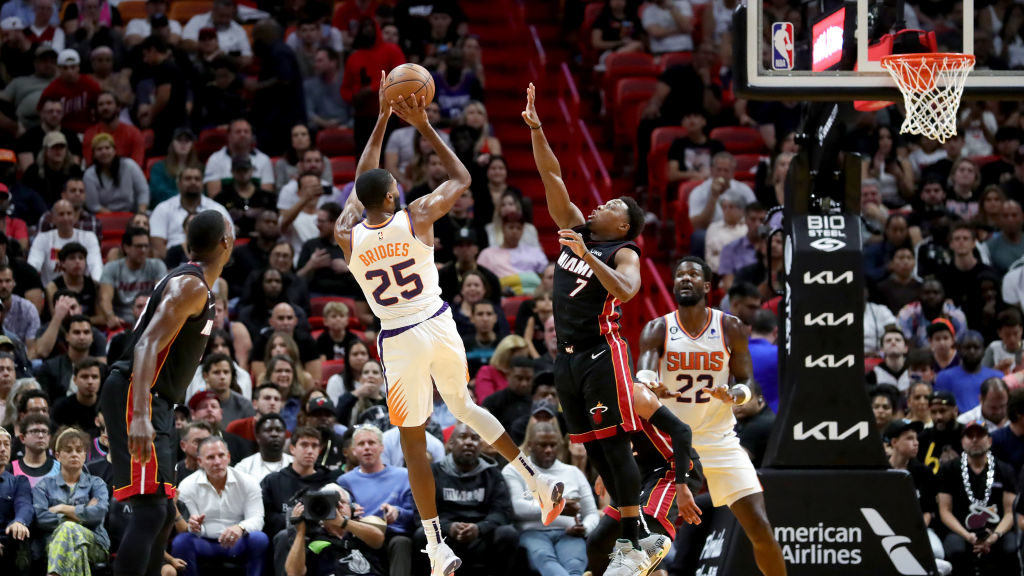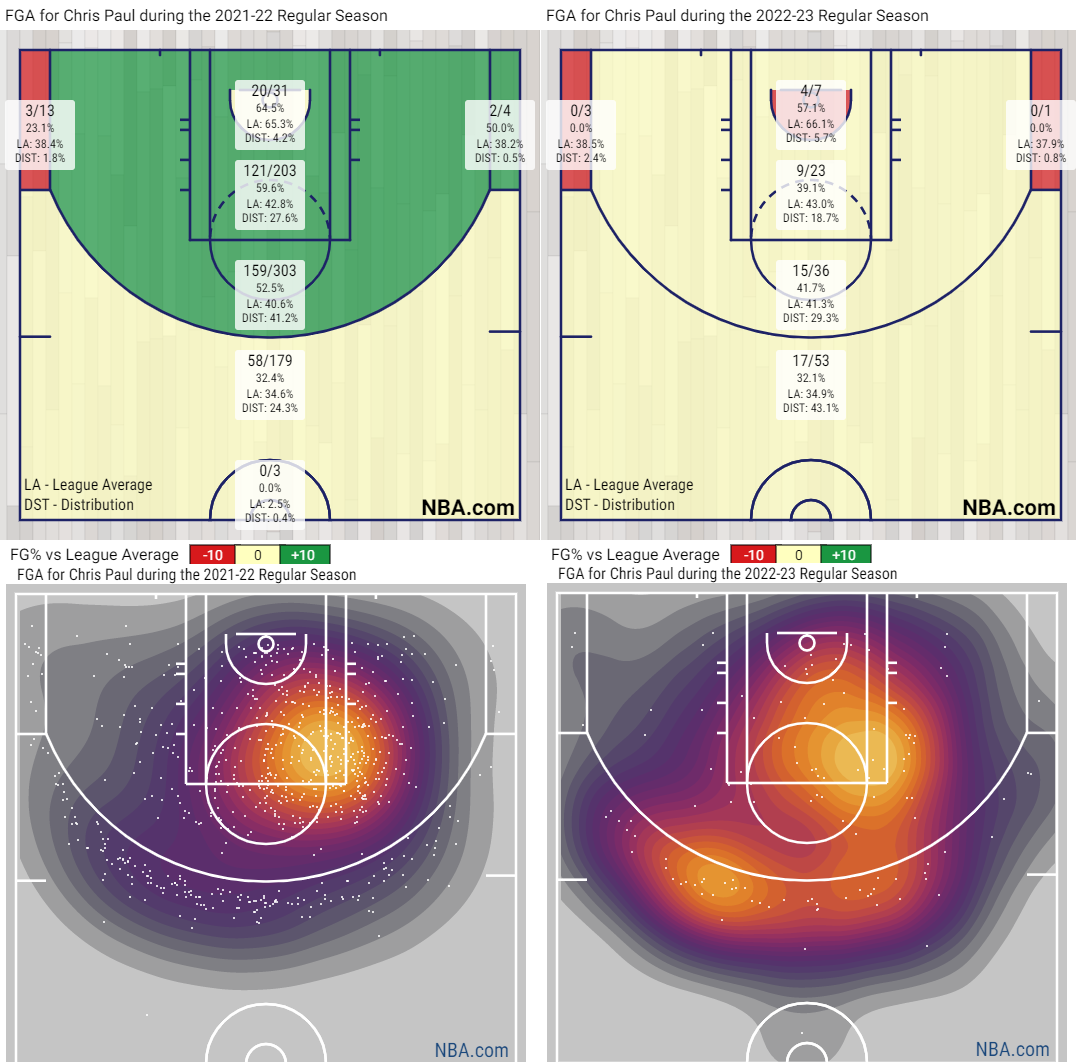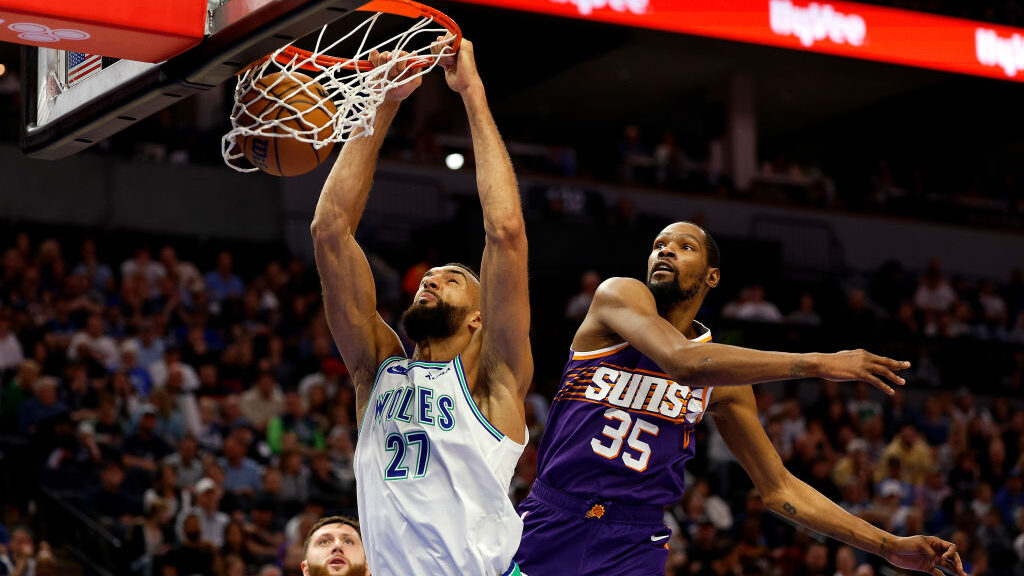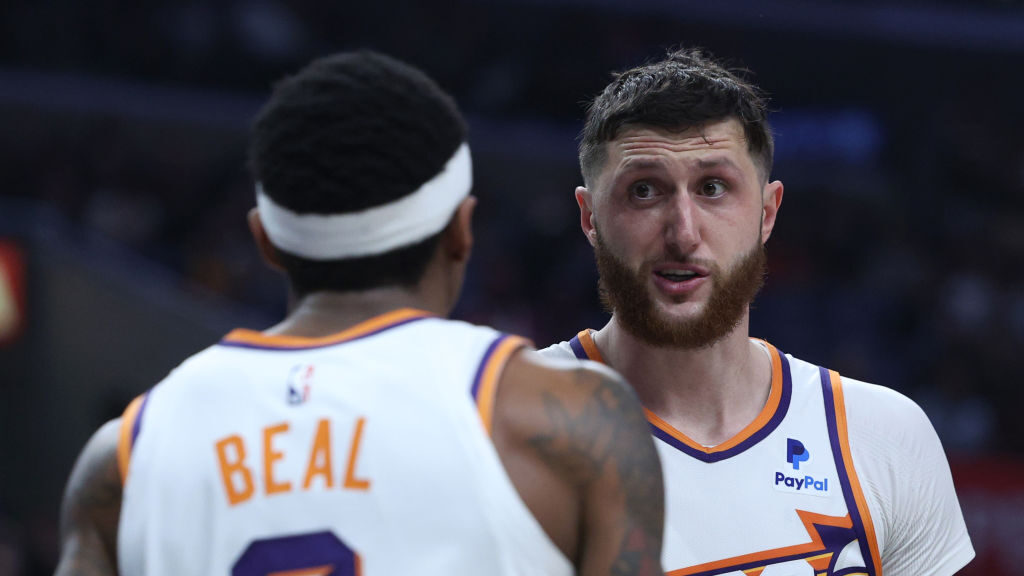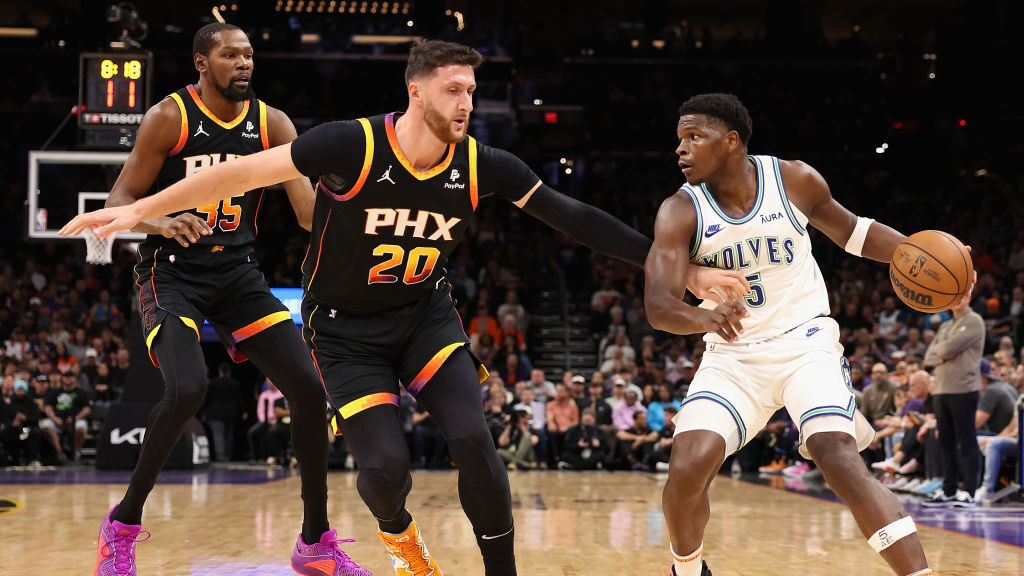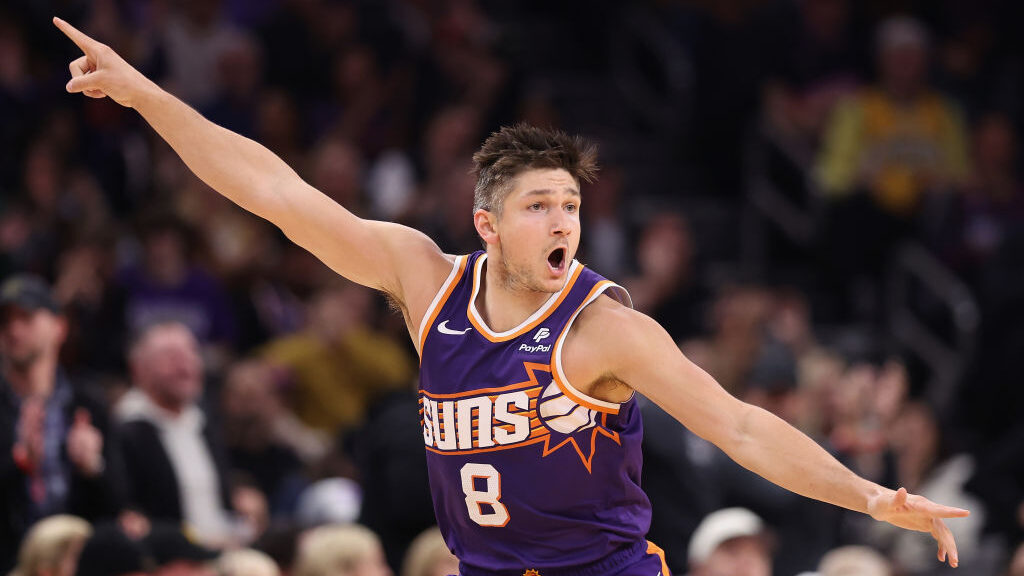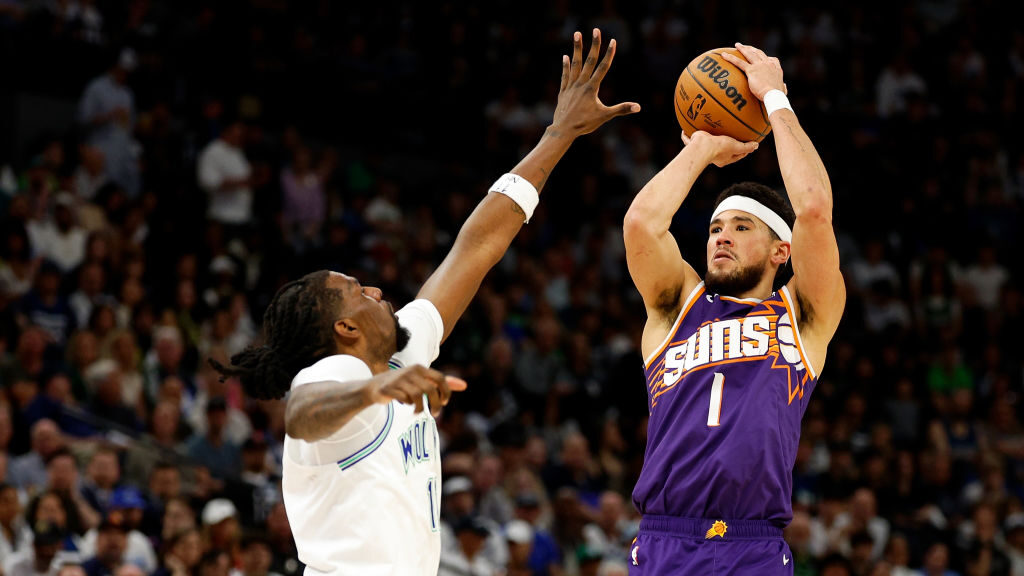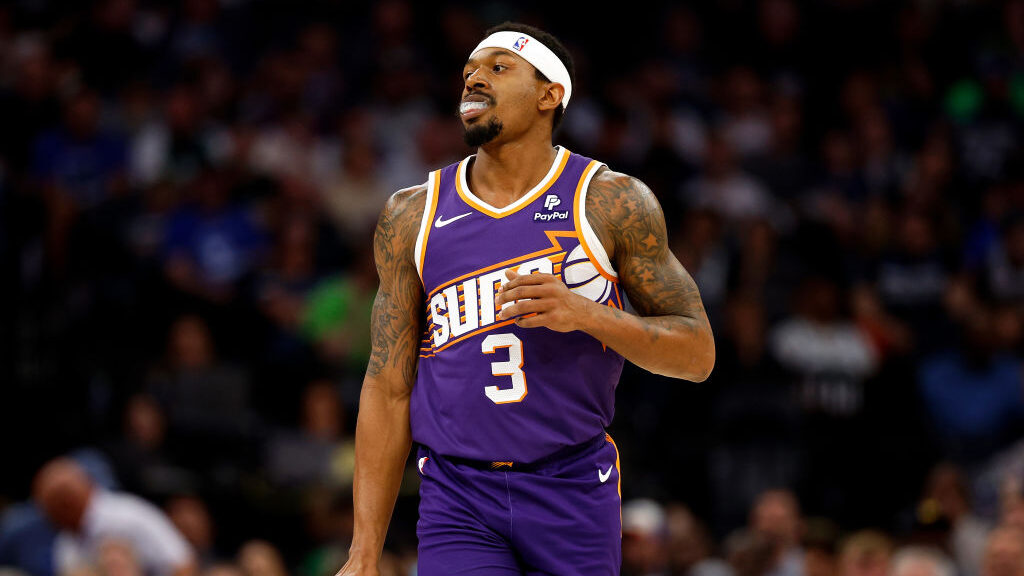Chris Paul’s shot profile has changed, Suns GM isn’t concerned
Dec 15, 2022, 1:32 PM | Updated: 1:41 pm
The NBA season remains young, and the Phoenix Suns’ five-game losing streak surely will not doom the team’s 2022-23 aspirations 28 games in.
But it’s been enough time to begin wondering what to make of Chris Paul, their best offensive option outside of Devin Booker for the past two seasons.
More than a quarter of the schedule done with, the point guard has not found his footing. He is four games back into the swing of things after missing a month with a sore heel.
His shooting, however, has plummeted from 49% last season to 37% over 14 games played this year. His shot volume is down 2.5 attempts per game in two fewer minutes (30.9).
Is Phoenix president of basketball operations and general manager James Jones concerned?
“I’m not concerned. It’s four games. After being out for (14) games, we expected him to have some ups and downs and he’s had those,” Jones told Arizona Sports’ Burns & Gambo on Wednesday.
“I think the way the season goes right now, you play every other day,” the executive added. “I’m expecting it’s probably going to take him 10-to-14 days to really get back into a rhythm. I wouldn’t be surprised if it takes him six to eight games to find his footing and conditioning.”
Once Paul is back in a rhythm, it begs three questions:
Can he revert back to his midrange attacking that made this version of the Suns so good and him a perennial All-Star? Even if that comes out only once in a while? And what would improving his three-point accuracy from 29% change for his teammates?
Let’s start with the first part of that two-pronged question. Right now, Paul’s shooting profile is worlds different than a year ago.
Year-to-year, the percentages have fallen off in the non-restricted area paint as well as between the three-point line and the paint.
Paul is also taking far fewer shots in those areas by rate, which backs up the lack of his signature right elbow midrange attacking.
Non-restricted paint area
2021-22: 60% (28% of all FG attempts)
2022-23: 39% (19% of all FG attempts)
Inside arc, outside the paint
2021-22: 53% (41% of all FG attempts)
2022-23: 42% (29% of all FG attempts)
While 52% of his attempts came after seven or more dribbles in 2021-22, it’s only at 35% this year, a sign he’s less willing or less able to isolate after matchup-hunting a defender of his choosing.
Paul has made a concerted effort to take more spot-up threes compared to the past two years.
Only 24% of his shots a year ago were above-the-break three-pointers, and that’s risen to 43% in the small sample size of 14 games. He’s taking 18% of his shots without taking a dribble, doubling the 9% catch-and-shoot attempts last season, per NBA.com.
Paul made five out of a season-high 17 shots Tuesday in a loss to the Houston Rockets, with 10 coming from three-point range. He and Mikal Bridges were more aggressive because the Suns need more from them as Booker sat out with a hamstring injury.
Until he gets his legs, it’ll be hard for Paul to answer the first part of our question.
If he can revert back to his midrange attacking ways, then it’s a matter of how often he can effectively help take over games.
Paul has been an erratic scorer on a game-by-game basis before and after his heel issue, a continuation of what looked like the poin guard wearing down last postseason.
Before heel injury — Chris Paul shooting percentages each game
16.7% — Oct. 19
45.5% — Oct. 21
27.3% — Oct. 23
50.0% — Oct. 25
14.3% — Oct. 28
42.9% — Oct. 30
41.7% — Nov. 1
25.0% — Nov. 4
42.9 — Nov. 5
100 (one shot attempt before leaving against the 76ers with a heel injury) — Nov. 7
After heel injury — Chris Paul shooting percentages each game
33.3% — Dec. 7
50.0% — Dec. 9
30.0% — Dec. 11
29.4% — Dec. 13
At some point, the Suns and Paul must find out how close he can get back to something like an All-Star level — even if that comes every other game or in conservatively selected fourth quarters.
Cam Johnson’s and now Booker’s injuries have thrown a few delays around giving the front office a chance to fully evaluate the roster as its healthiest. The end of December and start of January will be huge in determining how much change might be desired as the trade deadline sits on Feb. 9.
Head coach Monty Williams and Jones have been open with their words and actions: They see Paul’s limitations and have swung responsibilities to Bridges — as Arizona Sports’ Kellan Olson wrote about — as well as Deandre Ayton.
It’s fair to wonder if Paul can be a backup option if the playoffs come and that duo isn’t consistently there to back Booker as a No. 2 option. Giving them more keys in the offense is a work-in-progress the Suns are rightfully being patient with.
Relatedly, and to answer that third question posed, Paul reverting to something close to his career 37% three-point accuracy (not to mention Johnson’s return) can give Booker, Bridges and Ayton much more space to operate from the midrange inward.
The point guard is hitting 29% on catch-and-shoot opportunities this season, well below his career-worst of 40% for a full season. For his career, he’s a pretty darn good 44% on catch-and-shoot chances, and it’s assumed he will creep back toward those numbers at some point soon.
“It’s difficult for any player,” Jones told Burns & Gambo on Wednesday when asked about Bridges and Ayton taking more responsibility. “It’s not something you can predict. If they haven’t been in that position, they have to keep hammering away at it, and you have to keep encouraging them and pushing them to do it, and it’ll break.
“It takes work ethic and desire to be that type of player — and Mikal has that. I think he can be that, I think he’s shown glimpses. And we understand that we’re not going to be able to rely on Chris every night to be that No. 2 guy, and one of our guys, Deandre or Mikal, needs to step up.”


